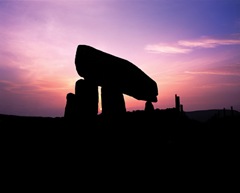Between rocks and hard places
 Ireland was once two islands and the Mourne mountains were as hot as California’s Death Valley, a new book outlines.
Ireland was once two islands and the Mourne mountains were as hot as California’s Death Valley, a new book outlines.
Ireland has a complicated and intriguing geological history but many do not know the details of how the country actually evolved.
While many of the facts, documented in a new book ‘Between Rocks and Hard Places’, are fascinating, author Paul Lyle says geology has a habit of “selling itself short” when it comes to communicating value and relevance.
However, he notes that the growing popularity of scientific television programmes means more people are now interested in the subject and have a “desire to learn more about what is under their feet”.
Lyle, an academic who has researched the origins of the Antrim basalts, comments that Ireland is the envy of many around the globe as “it is possible for anyone here to easily see and examine rocks across almost the entire range of geological time”.
The book, which includes contributions from the Geological Survey of Northern Ireland team, brings together information from scientific, historical, archaeological and mythical sources. One of the most interesting stories it reveals is how the island, as we know it, was formed as recently as 400 million years ago when movements in the Earth’s mantle moved continental plates, resulting in the closure of an ancient ocean and the fusing of two separate landmasses.
There is evidence that around 60 million years ago County Antrim would have resembled the volcanic landscape of present day Iceland.
County Down may not have been quite as blustery 400 million years ago. The book claims that ripple marks and mud cracks preserved in sandstone at Scrabo show that lakes and rivers were once located there but dried up because of extremely hot desert conditions. Lyle says the
environment in Northern Ireland some 250 million years ago was very similar to present-day Death Valley in California.
Local rocks also indicate that Ireland started out on the opposite side of the globe somewhere in the Pacific Ocean, east of Australia.
One of the landmarks Lyle is most interested in is Belfast’s Albert Clock. The lean of the clock is due to infamous ‘Belfast sleech’ a thick, dark, foul- smelling marine mud containing fossils such as oysters, mussels and snails. It has poor weight-bearing properties and anything built on it needs to be heavily strengthened.
Landscapes play an “important part” in helping people form identities and understand why life and culture exist in the form they do, comments Lyle. He hopes his work will “help people understand familiar places better and encourage them to explore new ones”.





